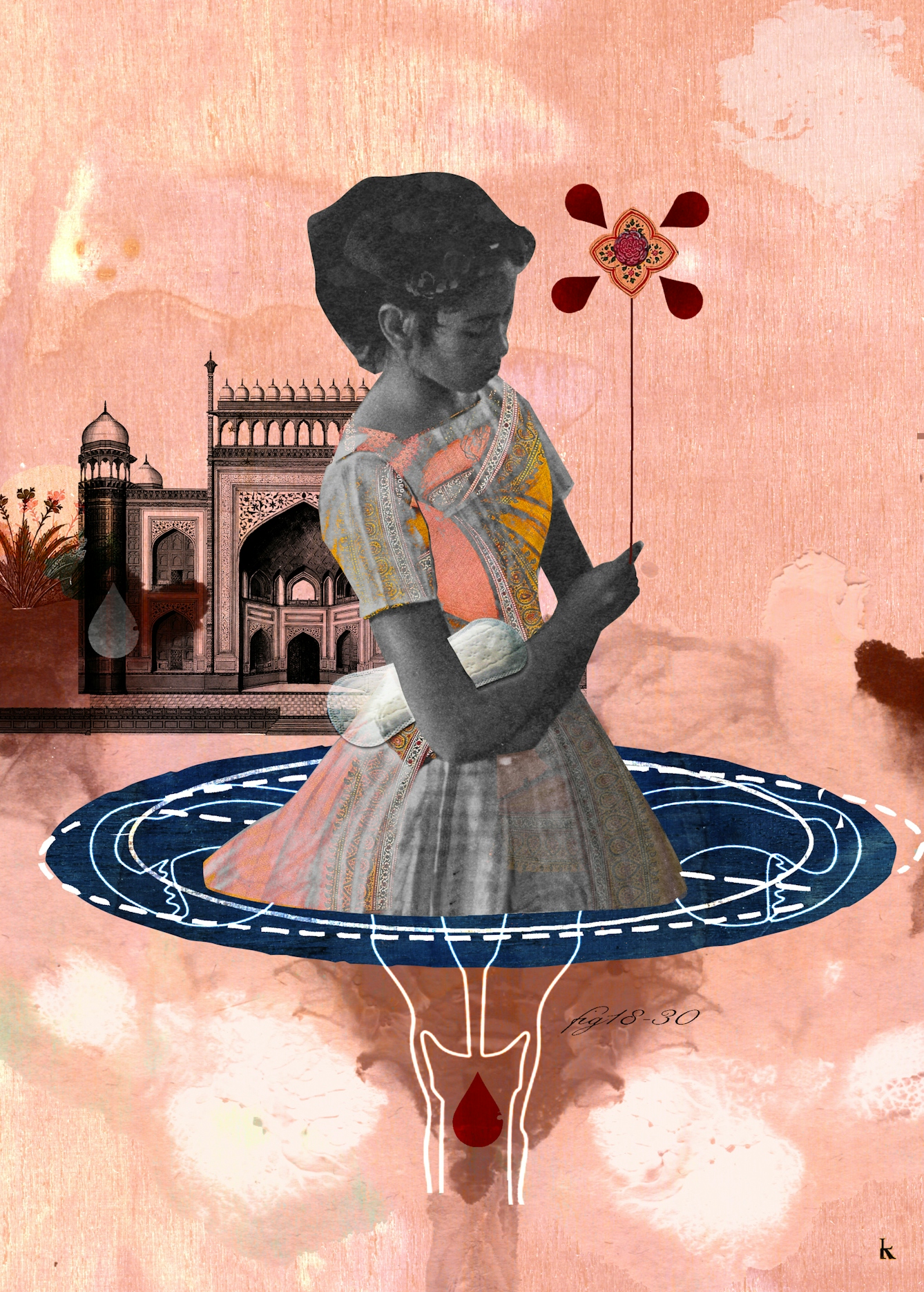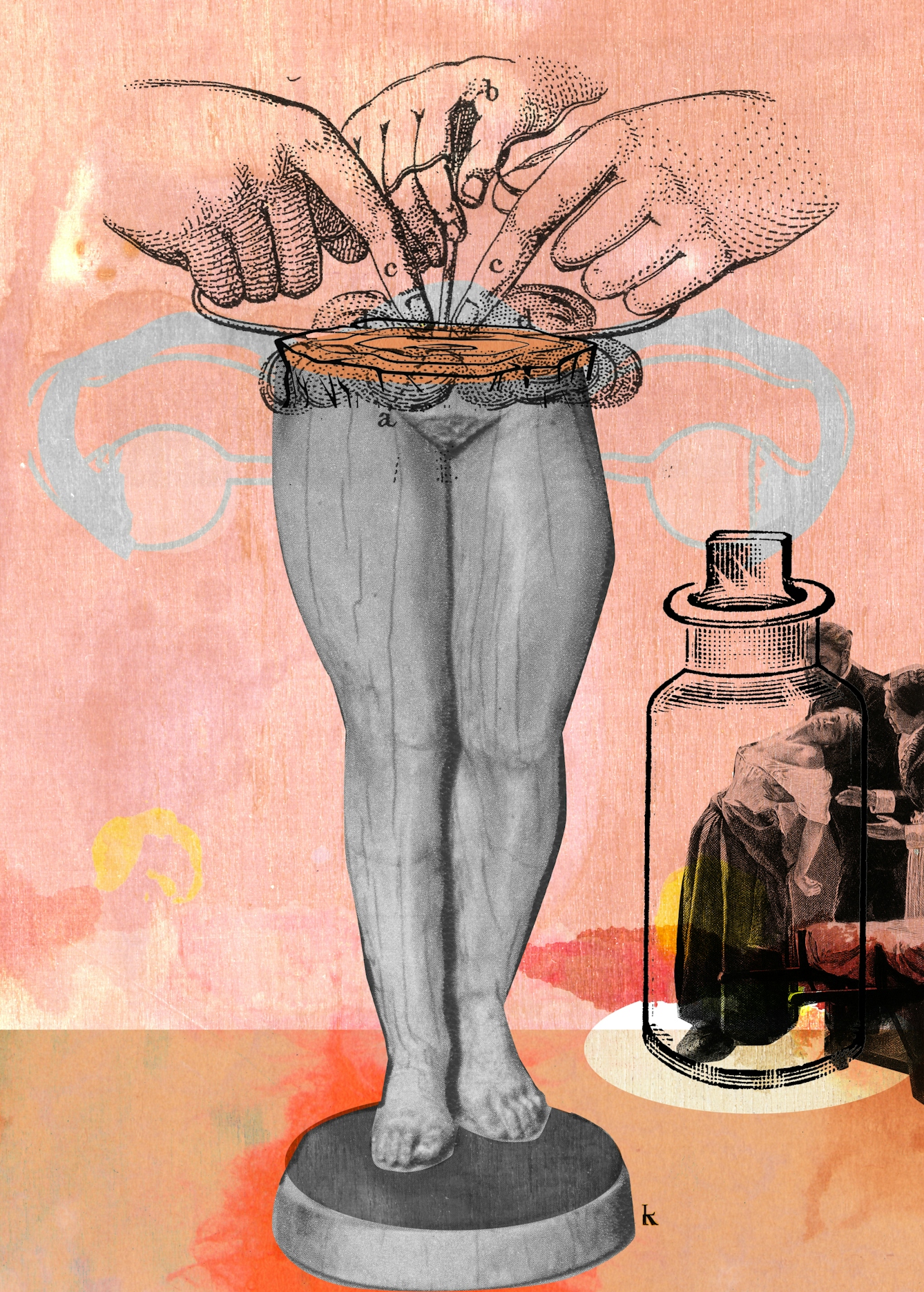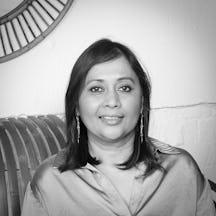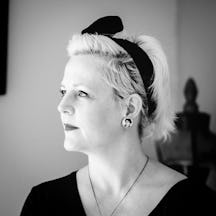Frank information about periods can be hard to come by, and stories that cloak menstruation in mystery stubbornly persist. Pragya Agarwal was recently shocked to discover that many people still believe that menstrual and moon cycles are somehow in sync. The behavioural scientist argues why inclusive, factual menstrual education is crucial.
I remember the exact moment that I started my periods. I was only eleven years old and had received no formal education at school or at home about what periods entailed. This was before the internet, in a small town in India. I wondered if I was the only one, because I never talked to anyone about it, not even my closest friends.
When I was growing up, women were considered impure when they menstruated, so they were not allowed to go into the kitchen, nor prepare food for others to eat. Things have changed, but not that much. Even now, women on their periods are not permitted to take part in some religious ceremonies and practices, such as entering a Hindu temple or fasting during Ramadan.
According to data released by the Indian government last year, there are 355 million menstruating women and girls in the country, and only 42 per cent have access to sanitary towels. The Indian NGO Dasra’s ‘Spot On!’ report shows that nearly 23 million girls drop out of school annually due to lack of proper menstrual-hygiene-management facilities. A horrifying 71 per cent of the girls surveyed for this report were not even aware of menstruation until they reached menarche.
We continue to find it difficult to talk frankly and factually about menstruation in an inclusive way.
Periods are stigmatised in many parts of the world, including in the UK. We continue to find it difficult to talk frankly and factually about menstruation in an inclusive way. Instead, biological reality is often made to seem mystical, or it’s implied that all bodies should conform to a fixed template. I have three daughters and I strongly feel that, if information about our own bodies isn’t grounded in facts, we are tools in patriarchal oppression.

“Periods are stigmatised in many parts of the world, including in the UK. We continue to find it difficult to talk frankly and factually about menstruation in an inclusive manner.”
Recently, the US company OMV (a subsidiary of the global company Vagisil) posted an advert on Instagram that said, “periods come with the power of the moon” and are “part of the magic of your body”. Teaching women that their bodies are magical or that menstruation is linked to the moon is not empowering.
I tweeted about this and it prompted a fiery debate. I was surprised by how many women still believe there is a strong link between menstrual cycles and moon phases, with women bleeding to coincide with the new moon, and ovulating around the full moon.
The word menstruation derives from Latin and Greek words meaning month (mensis) and moon (mene). The idea that menstruation and the moon are somehow in sync likely originated when there were no calendars or digital devices to track periods. The average lunar cycle (around 29.5 days) became a guide for menstrual cycles, too.
We have accurate ways of tracking periods now, but moon myths persist and are perpetuated as we attempt to cloak menstruation in mystery, rather than focusing on facts.
Women’s bodies and their ‘peculiarities’ have long been considered unsightly. Ancient Greek physicians were obsessed with the womb, and it was central to their proposition that women were inferior to men. It was thought of as a mystical creature by Plato and Hippocrates, something that just slopped around inside the body. The relationship between the womb and hysteria was first proposed during this period and, unfortunately, it has prevailed.

“Women’s bodies and their ‘peculiarities’ have long been considered unsightly. Ancient Greek physicians were obsessed with the womb, and it was central to their proposition that women were inferior to men.”
How data drives understanding of the menstrual cycle
For a long time, the standard length of a menstrual cycle had always been assumed to be 28 days. This is now being refuted, with research showing that there’s much greater variability. Only 13 per cent of cycles last 28 days, according to a study published in Nature in 2019, where 1.4 million menstrual cycles were recorded by 124,648 anonymised users. The data was largely centred in the Western world.
Many fertility-awareness-based mobile apps assume ovulation occurs 14 days before the next period. But research shows that only about 30 per cent of women reach the fertile window entirely within the days of the menstrual cycle identified by clinical guidelines – that is, between days 10 and 17. Most women reach their fertile window earlier and others much later.
In 1980 Winnifred Cutler published a study claiming to show a link between menstrual and lunar cycles. It fell short on several fronts, including that Cutler discounted women who didn’t have a cycle length of 29 days. Normal cycle length can be anything between 18–30 days. Cutler’s study also only lasted for 14 weeks.
A more recent study in 2013 showed absolutely no correlation between lunar and menstrual cycles. In 2019 the data-science team at Clue (a period-tracking app) analysed over 7.5 million cycles across 1.5 million unique users who were not using any hormonal contraception. They found no correlation between the lunar phases and the start or end of menstrual cycles.

“Unscientific narratives don’t help to remove any shame, fear or negativity around periods. This can only come from inclusive, fact-based sex education.”
It’s possible that daylight exposure and moonlight might have some impact on our bodies and biological processes, especially hormonal regulation, as we know that seasonal affective disorder is related to the hormone melatonin. There has also been some indication that sleep-wake behaviour, lack of sleep, stress and night shifts can affect menstrual cycles. This could be due to altered light exposure and reduced melatonin secretion. However, much of this is still speculative.
Much more research is needed to examine whether there is indeed any correlation between circadian rhythms and menstrual cycles, across the global population and irrespective of age and social context.
If linking periods to the moon gives someone a sense of wellbeing, that’s perfectly fine. But the connection shouldn’t be perpetuated as a fact. It also shouldn’t be used to ‘other’ people if their periods don’t feel magical or don’t conform to 28–29 days.
Unscientific narratives don’t help to remove any shame, fear or negativity around periods. This can only come from inclusive, fact-based sex education. I know that when I started my periods what I really needed was openness, honesty, data and specifics – information that would have helped me understand and manage menstruation better, a time that can be confusing for so many young people.
About the contributors
Pragya Agarwal
Dr Pragya Agarwal is a behavioural scientist, speaker and author of ‘Sway: Unravelling Unconscious Bias’ and ‘Wish We Knew What To Say: Talking with children about race’. Her next book ‘(M)otherhood: On the choices of being a woman’ is published in June 2021. She is the founder of a research think tank ‘The 50 Percent Project’ and has two podcasts, ‘Outside the Boxes’ and ‘Wish We Knew What To Say’.
Katy Lemay
Katy Lemay's passion for visual arts spans several decades. Her degree in graphic design from the University of Quebec in Montreal gave her the base she needed to become a well-respected illustrator. She finds inspiration for her complex collage illustrations in vintage magazines and photos, but her ultimate source of ideas comes from words. Experimental and intuitive, Katy's collage illustrations can be found in magazines, newspapers, advertising and on television networks.


